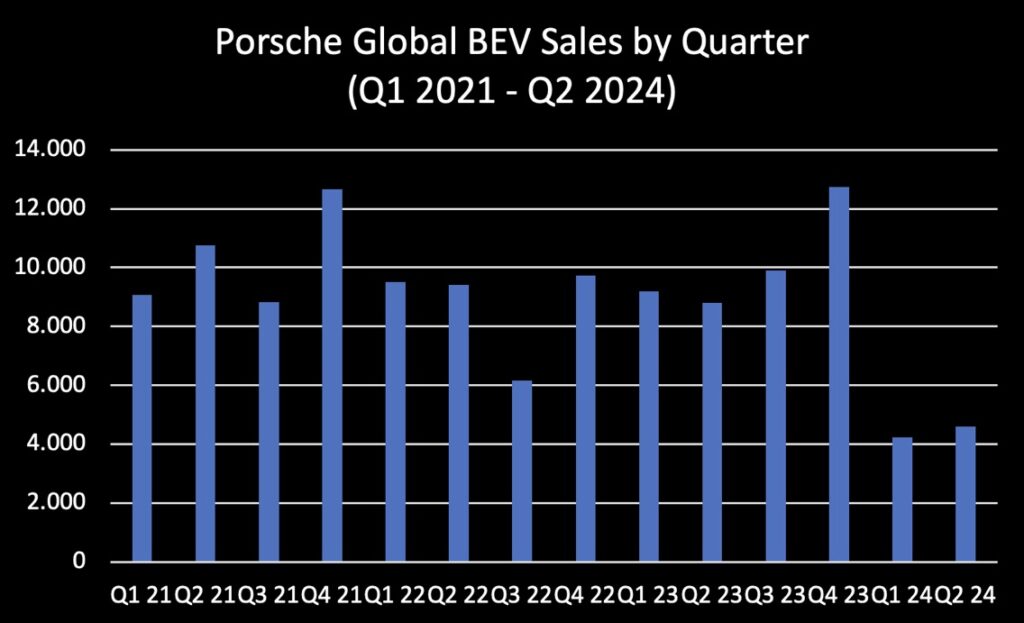Porsche Taycan: Understanding the Market Dynamics Behind Recent Sales Variations
The automotive world is abuzz with discussions surrounding the recent sales dip of the Porsche Taycan. While some are quick to jump to conclusions about the product itself, an in-depth look reveals a more nuanced picture. Let’s delve into the factors influencing these shifts and how Porsche is positioning the Taycan for long-term success.
An Overview of the Porsche Taycan’s Innovations
Porsche has consistently pushed the envelope in terms of electric vehicle (EV) innovation. The Taycan boasts charging capabilities that are among the fastest in the industry, with the ability to charge from 10% to 80% in just 18 minutes. This is complemented by a remarkable driving range of nearly 700 kilometres on a single charge. These features alone secure its reputation as a leading EV in the market.
Navigating Model Transition Challenges
One key aspect that has contributed to the sales decline is the ongoing model transition. As Porsche CEO Oliver Blume pointed out, switching from one model to its successor inevitably creates temporary gaps in the market. This phase involves discontinuing the older model while ramping up production and distribution of the new variant, complete with its regional adaptations and specific derivatives.
This transition period is not unique to Porsche; it’s a common occurrence across the automotive industry. The time taken to streamline production and hit full-speed manufacturing can result in short-term fluctuations in availability and sales figures.

Market Trends in Electric Mobility
Another significant factor is the current slowdown in the growth of electromobility in certain markets. The automotive sector is witnessing varying adoption rates of electric vehicles, influenced by regional economic conditions, government policies, and consumer readiness to switch from traditional combustion engines to electric ones.
Porsche’s experience with the Taycan reflects this broader trend. While some markets are embracing EV technology rapidly, others are more cautious, impacting overall sales performance.
Enthusiastic Customer Feedback
Despite these temporary setbacks, the feedback from Taycan owners has been overwhelmingly positive. Customers are thrilled with the vehicle’s performance, advanced features, and the enhanced driving experience it offers. This sentiment is crucial as it aligns with Porsche’s strategy of letting potential customers ‘experience and drive’ the Taycan to fully appreciate its benefits.
For Porsche, the challenge lies in effectively conveying the advantages of electric mobility to a broader audience. Collaborating with retail partners, the brand is focusing on immersive customer experiences to bridge this knowledge gap.
Introducing the Turbo GT Variant
Porsche has also expanded the Taycan lineup, introducing the Turbo GT variant. With enhanced performance metrics and cutting-edge technology, the Turbo GT aims to appeal to driving enthusiasts and those seeking an unparalleled EV experience.
This addition to the Taycan family underlines Porsche’s commitment to innovation and its drive to offer diversified options to meet varied customer preferences.
Looking Ahead: Porsche’s Long-Term Vision
The temporary decline in Taycan sales should be seen in the context of Porsche’s broader dynamics and market strategies. With continual advancements in technology, a robust customer base, and new variants like the Turbo GT, Porsche is well-positioned to sustain its momentum in the EV sector.
The current challenges are part of the natural cycle of model evolution and market adaptation. As these teething issues are resolved, consumers can expect to see a resurgence in Taycan sales, propelled by the vehicle’s compelling features and the brand’s forward-looking strategies.
In conclusion, while the headline figures might suggest a downturn, the reality is that the Porsche Taycan is poised for a bright future, driven by innovation, customer approval, and strategic adaptability.
